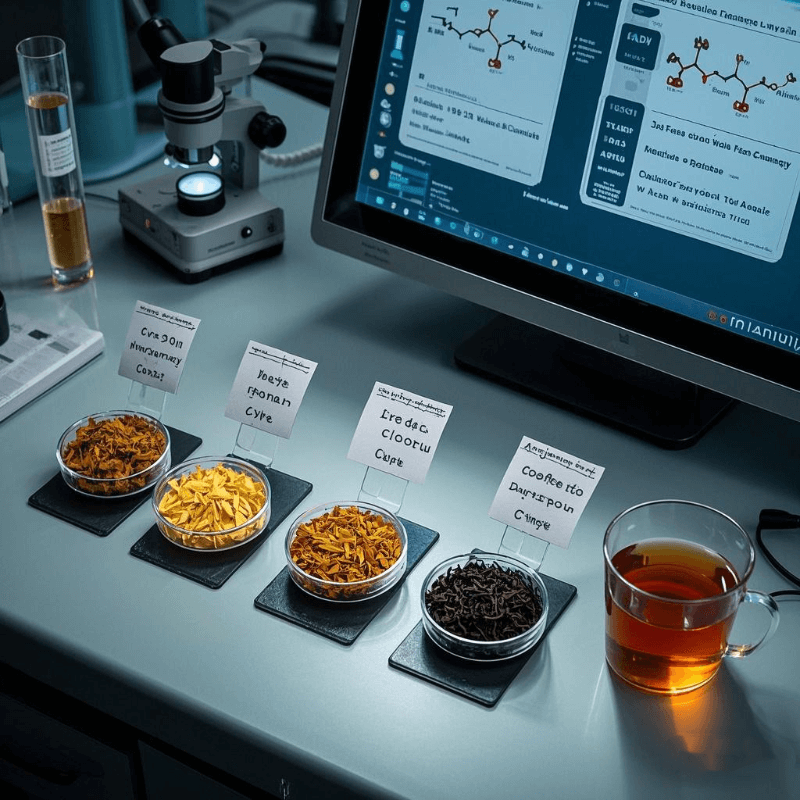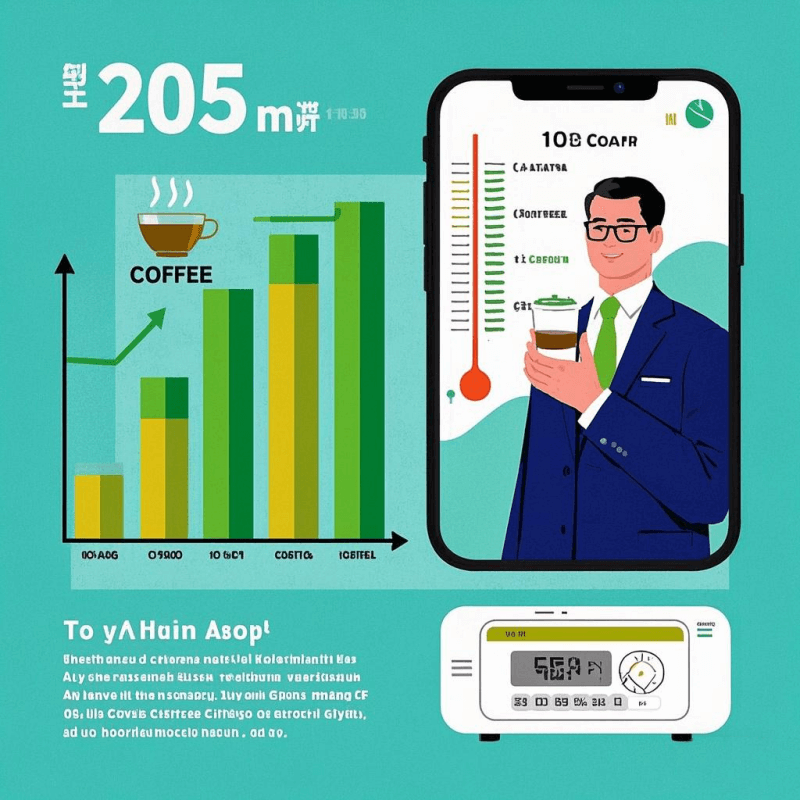In a world where energy drinks and coffee dominate the caffeinated landscape, this tea stands out as a sophisticated, balanced alternative. But a common question lingers among tea enthusiasts and health-conscious drinkers: how much caffeine in oolong tea actually exists? Understanding this key detail can help you harness its natural energy-boosting properties while avoiding unwanted side effects. Whether you’re seeking a morning pick-me-up or a midday recharge, decoding the caffeine content of this brew empowers you to craft a healthier, more intentional beverage routine. Let’s dive into the science, factors, and real-world implications of how much caffeine in oolong tea you can expect.
1. Introduction: Why Knowing How Much Caffeine in Oolong Tea Matters
Caffeine is a double-edged sword: too little, and it won’t provide the desired boost; too much, and it can cause jitters or disrupt sleep. For drinkers of this semi-oxidized brew, the question of how much caffeine in oolong tea is about more than just numbers—it’s about aligning your beverage choice with your lifestyle and health goals. Unlike coffee, which can deliver a harsh caffeine hit, this tea offers a smoother, more sustained energy lift, thanks to its unique combination of caffeine and L-theanine, an amino acid that promotes relaxation without drowsiness.
By understanding how much caffeine in oolong tea you’re consuming, you can:
- Avoid overstimulating your nervous system
- Plan your intake to enhance productivity without disrupting sleep
- Appreciate why this brew is prized for its balanced, mindful energy
Let’s start with the basics: a scientific breakdown of how much caffeine in oolong tea you’re likely to encounter.
2. How Much Caffeine in Oolong Tea? Expert Breakdown

The caffeine content in this tea is not one-size-fits-all. On average, an 8-ounce cup of brewed oolong tea contains 30–50 milligrams (mg) of caffeine, but this range can vary significantly based on factors like oxidation level, brewing method, and tea leaf quality. To put this into perspective:
Caffeine Content by Oxidation Level
| Oxidation Level | Example Teas | Caffeine per 8oz (mg) | Flavor Profile |
| Light (10–30%) | Alishan High Mountain | 30–40 | Floral, fruity, delicate |
| Medium (30–60%) | Phoenix Dan Cong | 40–45 | Balanced, nutty, sweet |
| Heavy (60–80%) | Da Hong Pao (Wuyi Rock) | 45–50 | Roasted, bold, spicy |
These variations mean the answer to how much caffeine in oolong tea depends on the specific type you choose. For instance, a lightly oxidized Taiwanese variety might have slightly less caffeine than a heavily roasted Fujian brew, though the difference is generally minimal compared to the span seen in coffee (95–200mg per 8oz).
Scientific Validation
A study published in the Journal of Agricultural and Food Chemistry analyzed caffeine levels in 20 oolong tea samples and found that while oxidation affected flavor compounds, caffeine content remained relatively stable across the spectrum, with most samples falling within the 35–45mg range. This confirms that how much caffeine in oolong tea is more influenced by brewing practices and leaf quality than oxidation alone.
3. Factors That Affect the Caffeine Content in Oolong Tea
While the 30–50mg range is a useful baseline, several variables can shift how much caffeine in oolong tea ends up in your cup:
1. Tea Leaf Quality
- Young Leaves vs. Mature Leaves: The youngest tea buds and first leaves (used in premium varieties) contain higher caffeine concentrations than older, more mature leaves.
- Organic vs. Conventional: Some studies suggest organic teas may have slightly higher caffeine levels due to natural stressors in pesticide-free environments, though the difference is marginal.
2. Brewing Method
- Steeping Time: Caffeine extracts quickly—most of it is released within the first 2 minutes of steeping. A 3-minute steep may yield 10–15% more caffeine than a 1-minute steep.
- Water Temperature: Hotter water (195–205°F for dark varieties) extracts more caffeine than cooler water (175–185°F for light brews), though the effect is less pronounced than in coffee.
- Leaf-to-Water Ratio: Using more tea leaves (e.g., 2 teaspoons instead of 1) will increase caffeine content proportionally.
3. Regional Variations
- High-Altitude Oolongs: Teas grown at higher elevations, like Taiwan’s Da Yu Ling, often have more concentrated natural compounds, including caffeine, due to slower growth cycles.
- Roasting Process: While roasting enhances flavor, it does not significantly reduce caffeine content. Even heavily roasted varieties retain nearly as much caffeine as their unroasted counterparts.
4. Comparing Oolong Tea Caffeine with Other Popular Drinks
Understanding how much caffeine in oolong tea means nothing in a vacuum—let’s see how it stacks up against other beverages:
Caffeine Content Comparison Chart
| Beverage (8oz serving) | Caffeine (mg) | Key Difference |
| Oolong tea | 30–50 | Moderate, sustained energy with L-theanine |
| Black tea | 40–70 | Higher caffeine, less balanced by theanine |
| Green tea | 20–45 | Lower caffeine, more vegetal notes |
| Coffee (brewed) | 95–200 | Intense, short-lived energy, potential jitters |
| Energy drink | 70–100 | High caffeine + sugar, risk of crashes |
| Decaffeinated tea/coffee | 2–5 | Minimal stimulation, ideal for evening |
This comparison highlights why this brew is often called the “Goldilocks” of caffeinated drinks: it’s not too high, not too low—just right for those seeking steady energy without the extremes. As one tea sommelier puts it, “Oolong tea’s caffeine is like a gentle nudge, not a sledgehammer.”
5. How Oolong Tea’s Caffeine Affects Your Body and Energy
The magic of this tea lies not just in how much caffeine in oolong tea but in how that caffeine is experienced. Unlike coffee, which hits your system quickly and can cause a spike-and-crash, its caffeine is paired with L-theanine, creating a unique physiological effect:
The Caffeine-Theanine Synergy
- Enhanced Alertness: Caffeine blocks adenosine receptors, promoting wakefulness, while theanine increases alpha brain waves, associated with relaxed focus.
- Reduced Jitters: Theanine mitigates caffeine’s nervous system overstimulation, making this tea a preferred choice for those sensitive to coffee’s edge.
- Sustained Energy: Studies show that the combination of caffeine and theanine provides a more consistent energy boost over 3–4 hours, compared to coffee’s 1–2 hour peak.
Health Implications
- Cognitive Function: A 2017 study in the British Journal of Nutrition linked moderate caffeine intake (300–400mg daily) to improved memory and attention, which aligns with 6–8 cups of this brew.
- Metabolic Boost: Caffeine in this tea can temporarily increase metabolic rate by 3–11%, aiding in calorie burning—though this effect is most pronounced when combined with physical activity.
6. Managing Your Caffeine Intake Through Oolong Tea
Now that you know how much caffeine in oolong tea you’re consuming, here’s how to integrate it into a balanced routine:
1. Know Your Tolerance
- Sensitive Drinkers: Stick to light varieties (30–40mg per cup) and limit to 2–3 cups daily.
- Regular Consumers: Medium to dark oolongs can be enjoyed 4–5 cups daily without exceeding the FDA’s 400mg safe limit.
2. Time Your Consumption
- Morning Boost: Enjoy a medium-oxidized brew like Phoenix Dan Cong with breakfast to kickstart your day.
- Afternoon Focus: A lightly oxidized Alishan variety at 2pm can sustain energy without interfering with sleep (avoid after 4pm if sensitive).
3. Optimize Brewing for Your Goals
- Lower Caffeine: Use cooler water (175°F) and shorter steeps (1–2 minutes).
- Higher Caffeine: Opt for boiling water (200°F) and longer steeps (3–4 minutes) with premium leaves.
4. Pair Mindfully
- With Meals: Its caffeine is better tolerated when consumed with food, which slows absorption.
- With Relaxation: Use the ritual of brewing this tea to signal focus time—its balanced caffeine makes it ideal for deep work sessions.
7. Conclusion: Choose the Right Oolong Tea to Stay Energized, Naturally
The answer to how much caffeine in oolong tea is as nuanced as the tea itself—ranging from 30–50mg per cup, influenced by factors like oxidation, brewing, and origin. But beyond the numbers, this brew offers a holistic energy solution: a natural stimulant paired with calming theanine, creating a state of “alert relaxation” that’s hard to achieve with other drinks.
Whether you’re sipping a light Taiwanese variety for a gentle morning lift or a roasted Wuyi brew to power through an afternoon slump, understanding how much caffeine in oolong tea ensures you’re in control of your energy levels. Ready to explore the perfect option for your routine? Discover the natural strength of oolong tea in every sip and experience the balanced energy boost that makes this tea a favorite among those who value both productivity and wellness.
Remember, it’s not just about the caffeine—it’s about how you use it. With this tea, you can boost your energy naturally, sustainably, and deliciously.


Pingback: Caffeine in Oolong Tea: How Much & Its Impact on Your Energy
Pingback: Amount of Caffeine in Oolong Tea: Understand Levels & Health Impacts